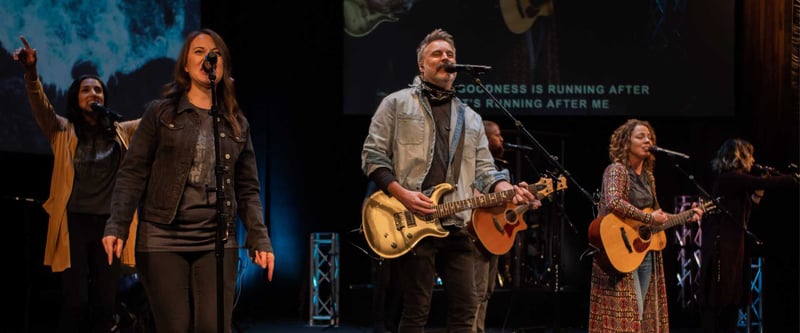VIDEO
Products
Streaming
Deliver flawless live video to any audience, anywhere
OTT Apps
Launch and monetize your own branded TV & mobile apps
Spark Encoder
Tap into hardware encoding that's compact and powerful
Broadcaster App
Go live straight from your phone or tablet with studio-quality control
Features
BoxCast Flow
Ensures smooth playback even on shaky networks
Sharing
Instantly clip, share, and amplify your broadcasts
Producer
Create professional streams right from your browser
Third-Party Encoders
Use the gear you love with our support of RTMP and SRT
AUDIO
Mixing Station Anywhere
Control your digital mixer in real time from anywhere
Mixing Station Web
Mix, manage, and monitor live audio in a browser from anywhere
Compatible Mixers
Connect your digital mixer to Mixing Station and Mixing Station Web
INDUSTRIES
House of Worship
Reach and engage your congregation wherever they worship
Sports
Stream games with professional quality for fans everywhere
Local Government
Bring transparency and connection to your community broadcasts
Business
Power your corporate events, webinars, and live streams
LEARN
Blog
Insights, trends, and tips for the audio/video community
Tech Tips
Quick how-tos and deep dives on the latest streaming technology
Guides
Essential tips and expert strategies to expand your reach
Newsletter
Stay up to date with product news, best practices, and more
Podcast
Hear stories and strategies from our customers and experts
DISCOVER
Customer Stories
Explore real-world success stories to inspire your organization
Events
Join us at an upcoming conference and meet with our team
Webinars
Get all the details and register for our next live webinar
About Us
Discover our company's mission, values, and team story
Church + House of Worship, Hybrid Events, Featured House of Worship

BoxCast Team • December 21, 2022
Picture a typical Sunday at your church. Your service probably consists of fellowship, prayer, Scripture reading, preaching, and praise and worship through song.
Though worship is a key component, it often gets shortchanged when it comes to live video streams. This isn’t deliberate — it’s usually just the result of limited resources or other common challenges churches face, including:
You might have already decided that live streaming is important to your church, and it’s possible you’ve done everything you can to attract new members. But once they’re tuned in, it’s important to make sure they’re engaged. You know hybrid worship services are crucial to your congregation now, but you want to improve your services. Making music a greater part of your broadcast is a great way to do this, so viewers can join in worship with the rest of your congregation.
This post covers how to improve your church's live stream and make the most of your worship services. Use these tips to overcome potential challenges you might encounter while streaming.
This starts with how many and what kind of cameras you use.

A simple, single-camera setup can work great for smaller churches. Position your camera so it can be angled to get a good shot of the performer(s). Avoid situations where the online audience can hear someone singing or playing without being able to see them.
If your worship consists of one person leading your congregation in song, your solution is simple: Keep the camera on the worship leader with occasional shots of the congregation. Things get more complicated if your church has a choir, organist, soloist, multi-piece band, or a combination of the above.
For a multi-camera setup, position one camera so it’s focused almost exclusively on the performer(s). Learn how to seamlessly switch between cameras and performers in a multi-cam live production, so it enhances — and doesn’t detract from — the experience. Audience shots can make viewers feel more present when used in moderation, but shouldn’t distract worshippers in your live audience or draw attention away from the worship itself.
Whether you use fixed (stationary) or moving cameras depends on your space and how distracting a roaming cameraperson might be. If you’re able to get close to the performer(s) with a moving camera for live streaming, don’t be intrusive. In some cases, musicians aren’t used to being on camera, and might get rattled by one that’s approaching too close.
A great alternative is to set up a stationary camera closer to the action — like next to the drum kit, so you can get a close shot of the drummer without being distracting to those performing and worshiping in person. Experiment with different angles and camera shots to find what works best.
Sound quality is, of course, crucial. The microphones on video and DSLR cameras have gotten better, but if you have the equipment and expertise to use remote microphones, you’ll get better quality. Google will lead you to various tutorials on the best ways to mic a choir or band.

Audio isn’t only important for your worship service, though. It’s essential to your entire stream, as even the most dedicated viewer is going to have a hard time watching a live stream with poor sound quality. Make sure you're giving stream viewers the best experience: Here are 5 easy ways to improve the audio of your live streams.
Directing a live streaming production can be stressful. You make a lot of decisions about which shots to use in the moment, and might have to do things like troubleshoot a faulty mic or deal with a rogue singer who just won’t stay in place. The ability to automate as many things as possible, so you can set them and forget them, is a huge help.

You should be using a streaming service that allows you to schedule and automate your streams in advance, as well as program your encoder to automatically start your stream at the right time. There’s nothing worse than putting in all that hard work just to realize you forgot to hit the Start button on your encoder.
Streaming music that isn’t your own original content can be tricky. Even if you do own the rights to the music, many streaming services don’t have an easy way to submit those licenses. Sites like Facebook and YouTube are very strict on copyright infringement, and will often shut your stream down without trying to sort out whether you have the right to stream it or not.
Usually if you stream copyrighted music to Facebook or YouTube, their approach is "shut down first, ask questions later."

This is why you shouldn't just be streaming to Facebook or YouTube alone. Using a paid service like BoxCast can eliminate many of these concerns. Paid services are generally much more reluctant to shut down your streams and often let you embed your live stream on your website — so you control your own content. Plus, they almost always have a friendly support person standing by to help with questions you might have.
There are lots of ways you can help at-home worshippers feel engaged and included in your worship service. You can start by displaying information and details about people and content being presented at the bottom third of your video stream. You should also display song lyrics and captions so viewers can follow along.

Use a chat feature that can be enabled or disabled. You should also have a moderator who can ensure things stay on track and offer to pray with people if they like.
You might even encourage viewers to turn their living room into their own private sanctuary and put on headphones. Or stream from their TV and include their families. All of these things can deliver the church experience and make them feel included in your worship service.
Improve your church service live stream by making sure everyone can find it on your website and social media. Use a paid streaming service like BoxCast to avoid being shut down for copyright and licensing issues. Use graphic overlays and captions to make sure viewers can follow along with song lyrics. Ultimately you want to ensure your audio is free from issues by properly fitting worship bands with microphones and that your camera setup works for your specific stage and church environment.
You can stream to anywhere your viewers might already hang out — YouTube, Facebook, Twitter, etc. — but it’s also important to stream to your own website. This helps folks easily find you while offering them a place to give, along with info on how to get involved in your other programs and events. Making your stream available on a set-top box like Apple TV, Roku, and Amazon Fire TV is another great way to give viewers access to your church online.
There are plenty of reasons why people might prefer an online experience to an in-person worship service. Travel, illness, distance, and disabilities might make it impossible for them to physically attend. Many people like to check out a church before they decide to commit to attending regularly in person — an online stream is a great way to introduce your church to them in a safe, non-threatening environment.
Just because some members of your congregation aren’t physically present in your space doesn’t mean they have to miss out on worshiping with the rest of your church family. There are oodles of easy things you can do today to help them feel included and engaged. See these guides for more:
© 2026 BoxCast. All Rights Reserved. | +1-888-392-2278